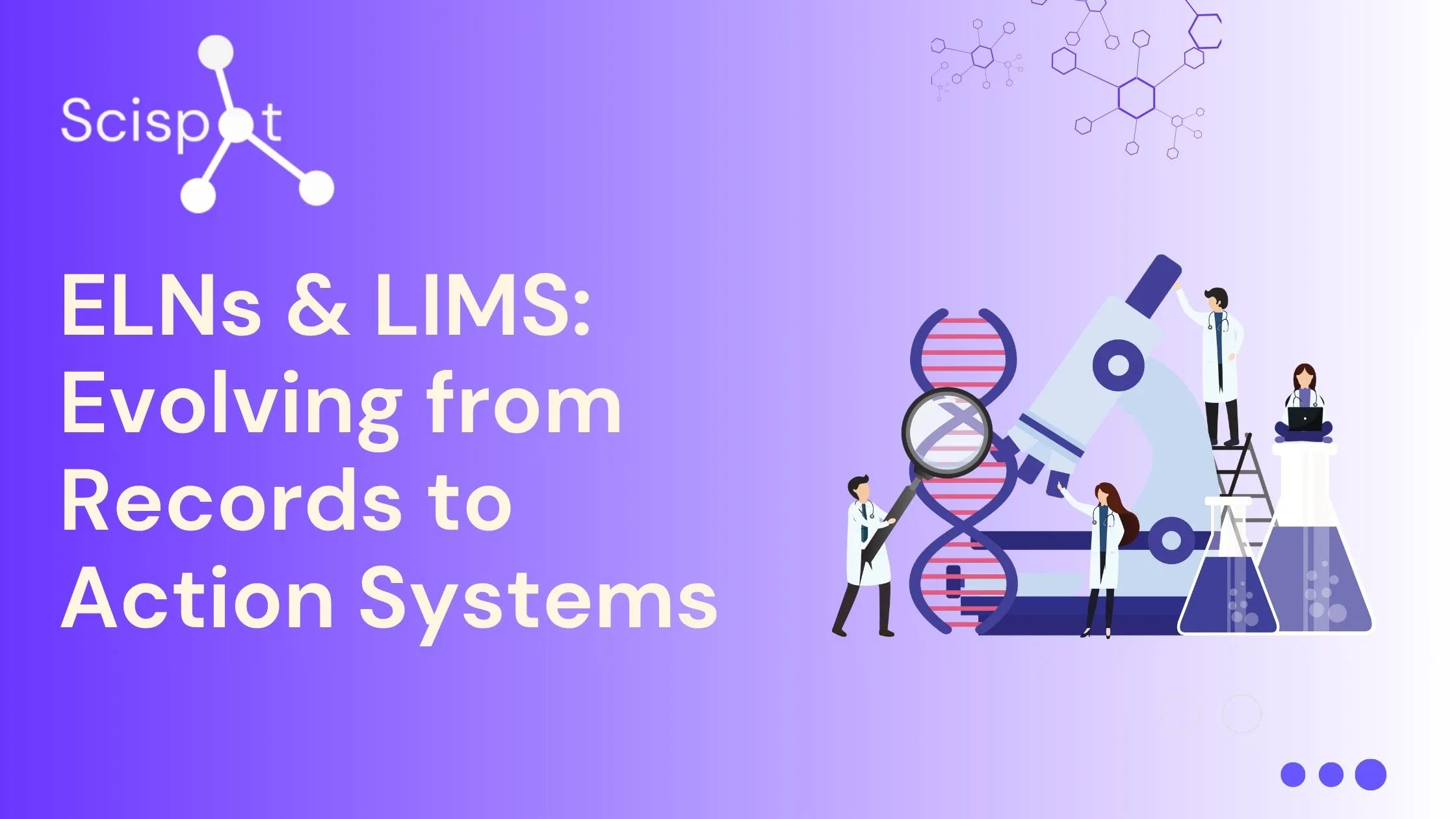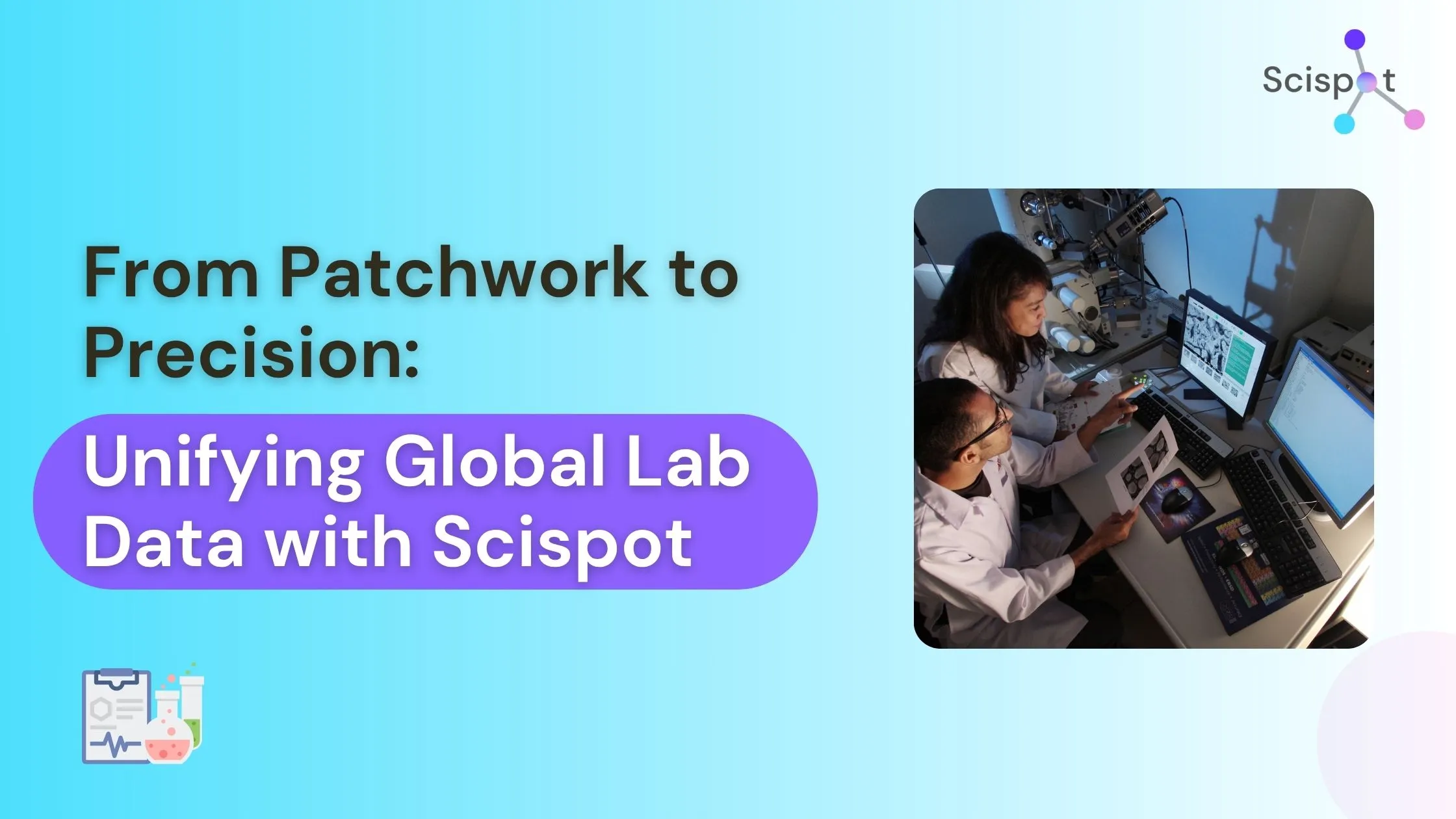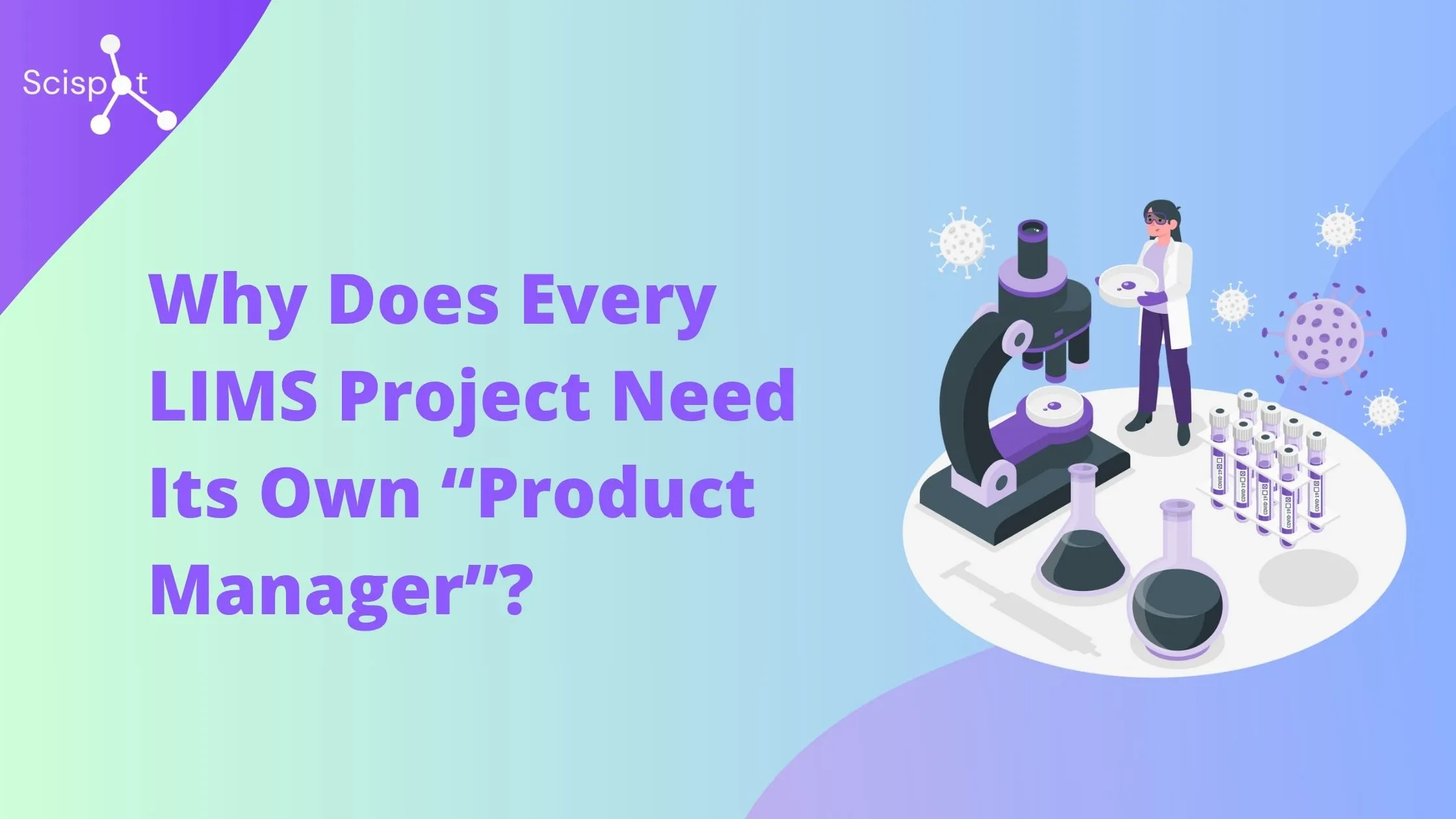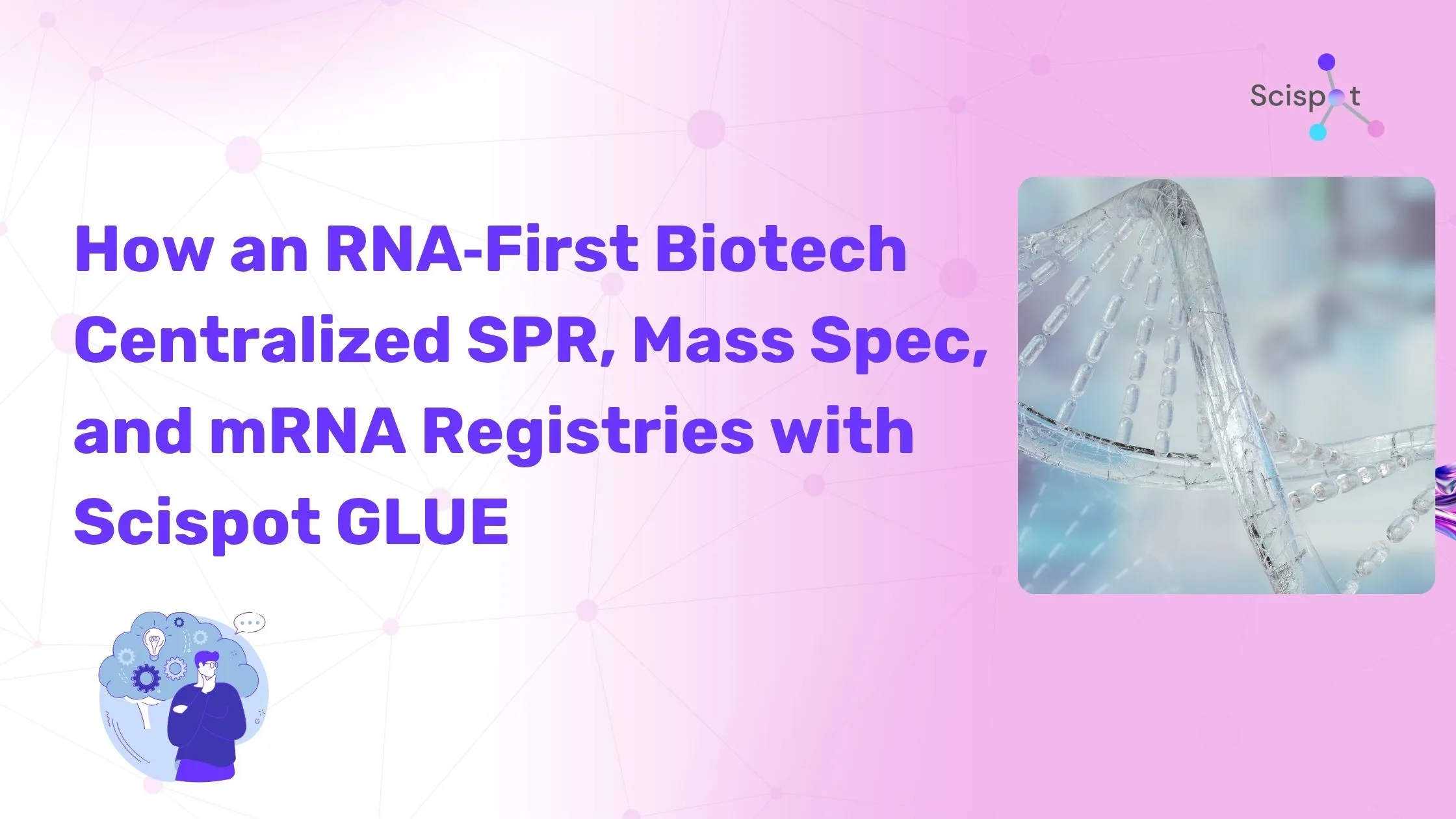ELNs began as digital notebooks. LIMS began as sample and workflow managers. The lines now blur. ELNs can guide work like a laboratory execution system. LIMS can orchestrate data across teams and sites. Labs need a system of action that turns data into decisions and protocols into automated runs. Scispot is built for that layer. It unifies ELN, LIMS, and a data fabric, then adds automation, AI, and compliance controls to run the lab end to end.
Why ELNs and LIMS still matter
An ELN is the scientist’s digital bench journal. It captures protocols, observations, and results. It keeps them searchable and auditable. It also makes collaboration easier because teams can view the same record, version it, and add context. In short, it preserves memory and intent.
A LIMS is the lab’s air‑traffic controller. It registers samples. It routes work. It tracks chain of custody. It exchanges results with other systems and external partners. It shines in routine testing, regulated settings, and multi‑site operations. It keeps motion and status in sync.

From “recording” to “executing”: ELN becomes LES
Modern labs do more than write and store. They must execute with discipline. That is where the laboratory execution system concept fits. An LES walks analysts through each step. It enforces SOPs. It blocks out‑of‑order actions. It captures data at the moment of work. It reduces deviations and transcription errors because it makes the right path the easy path. Many ELNs now provide LES‑like controls when configured with structured steps, inputs, and checks. The result is consistent execution in QC and manufacturing, not only research.
This shift has regulatory anchors. 21 CFR Part 11 defines expectations for trustworthy electronic records and signatures. ALCOA+ describes what good data looks like: attributable, legible, contemporaneous, original, and accurate, plus complete, consistent, enduring, and available. GAMP 5 (2nd ed.) gives a risk‑based approach to validating computerized systems. Together these ideas move ELN and LIMS from note‑taking toward guided, defendable execution.
Where LIMS still shines
LIMS remains best for sample‑centric work. It balances loads. It routes tests. It tracks status and turnaround. It integrates to instruments and reporting systems. In public health and clinical contexts, LIMS supports electronic lab reporting and standard‑based exchange. It is built for scale and interoperability.

Consolidation beats tool sprawl
Running parallel ELNs, or a patchwork of ELN plus LIMS, creates friction. People re‑enter data. Interfaces differ. Validation and maintenance multiply. Many labs now consolidate or integrate through one data model and a thin orchestration layer. The win is clear. One sign‑on. One audit trail. One version of the truth. A system of action brings this to life because events trigger work, not people passing files.
AI and ML turn ELNs into discovery engines
ELNs do not have to be passive stores. With AI, they can help interpret data, spot trends, and suggest next steps. They can flag anomalies in QC runs. They can estimate loads or stockouts. They can summarize long reports and connect results to prior work. These gains depend on data quality. FAIR principles and ALCOA+ discipline make models useful because the data are findable, accessible, interoperable, reusable, and trustworthy. When those foundations exist, analytics and machine learning become a force multiplier for decision‑making.

Standalone or integrated? It depends on your stage
A standalone ELN suits small teams, fast‑growing startups, academic groups, and CROs that do not yet need deep sample logistics. It gets you moving quickly and keeps costs down. As complexity grows, gaps appear around inventory, routing, and cross‑system traceability. An integrated ELN plus LIMS fits enterprises, CDMOs, and highly regulated labs. It provides end‑to‑end traceability and consistent SOP enforcement across sites. The tradeoff is heavier change control and a longer validation path. If you need LES‑style enforcement and inspection‑ready records now, go integrated. If you are pre‑GxP and need speed, start with ELN and choose a path that can grow into LIMS and LES without a rewrite. In either path, plan for FAIR metadata, ALCOA+ integrity, and Part 11‑aligned controls from the start.
What good selection looks like
The short list is stable across industries. You want real audit trails and e‑signatures aligned to Part 11. You want data integrity by design. You want a risk‑based validation plan based on GAMP 5 so effort focuses on what matters most. You want open APIs and connectors for instruments and apps. You want schema control for samples and results so data stay clean. You want metadata first so AI and analytics have something solid to use. You also want proof of security controls, such as SOC 2, not just claims. These are the foundations of a mature stack.
Scispot as the data and automation layer—the system of action
Scispot is designed to sit above and across instruments, apps, and sites. It acts as the data and automation layer that unifies ELN, LIMS, and a lakehouse or scientific data store into one operating fabric. Its GLUE toolkit standardizes your data model and runs pipelines so instruments, apps, and analytics stay in sync. Scispot also ships alt‑ELN and alt‑LIMS for teams that want an all‑in‑one start without closing the door on modular growth. Think of ELN and LIMS as systems of record, and Scispot as the layer that turns records into action.
The impact shows up in daily flow. You can draft or import an SOP in the ELN and publish it as a guided method. You can register samples, auto‑create worksheets, and reserve instruments through LIMS‑like flows. When an instrument drops a file, GLUE parses it, checks specs, and attaches results to the right sample. If something fails, the system routes it to the right reviewer, requests e‑signatures, and links to a CAPA when needed. At night, curated tables land in your warehouse and BI tools. You move from manual checkpoints to data‑driven triggers. You reduce busywork and cut deviation risk. You get inspection‑ready records by default, not by cleanup.
Compliance support is built in. Scispot provides tamper‑evident audit trails and e‑signatures aligned to Part 11 expectations. It offers role‑based controls and validation services to meet GxP expectations. Its public posts document a SOC 2 Type I milestone and a trust hub that outlines security controls, with HIPAA support noted. This security posture matters when you connect external partners and automate decisions.
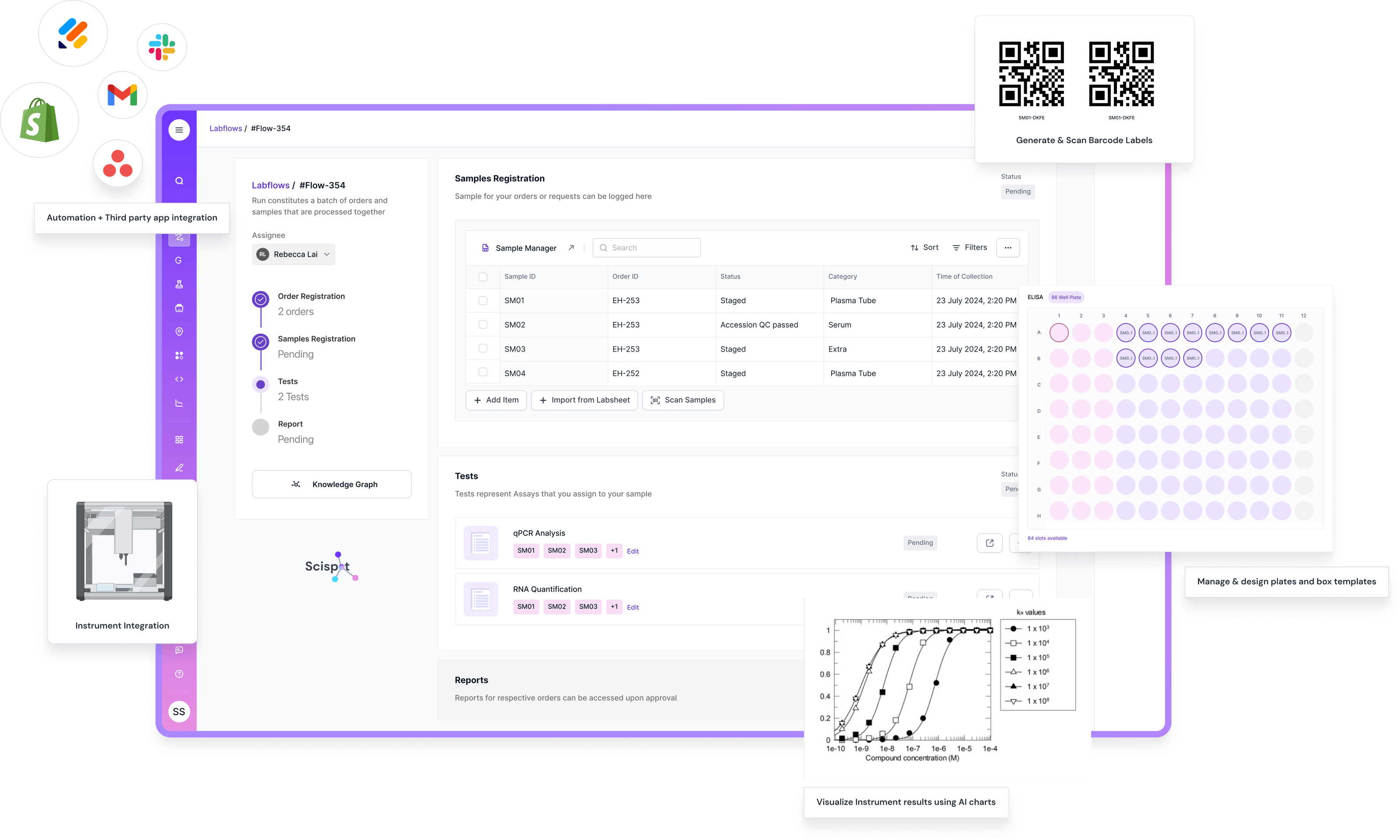
A simple 90‑day blueprint
Start with foundations. Lock your sample and result schema. Map instruments and file formats. Enable audit trails, e‑signatures, and roles so early data are already compliant with Part 11 expectations. Move to guided execution. Convert a high‑volume SOP into an LES‑style method inside the ELN. Add checks for reagents, calibrations, and acceptance ranges. Automate the hand‑offs. Ingest instrument files into your data store. Trigger QC rules and route exceptions to review. Publish a self‑service results table to your BI tool so stakeholders stop asking for exports. Close with validation and scale. Execute a risk‑based validation per GAMP 5 and extend to a second site or assay once the first loop is stable. This cadence builds value in weeks, not quarters, while keeping risk in check.
Pros and cons of a system‑of‑action approach
The upside is clean and timely data with fewer hand‑offs. You get stronger inspection readiness because every action leaves a trace at the moment of work. You unlock AI and analytics because the data are structured and documented from the start. You scale across sites with less friction because the same model and rules travel with you.
The downside is front‑loaded design work. You must harden schema and SOPs before you automate. You need disciplined change control so automation does not drift. In regulated settings, you must plan validation. The GAMP 5 risk‑based approach helps keep this effort focused and right‑sized.
Key takeaways
ELNs and LIMS are converging. ELNs now execute. LIMS orchestrates at scale. LES concepts carry the rigor that QC and manufacturing need. AI adds value only when FAIR and ALCOA+ are in place. The winning pattern is a system of action on top of unified data. Scispot delivers that pattern with GLUE for data and automation, an ELN and LIMS you can grow with, and compliance by design for regulated growth.





